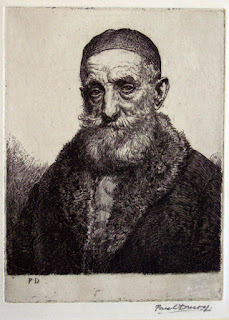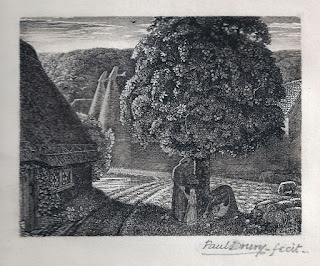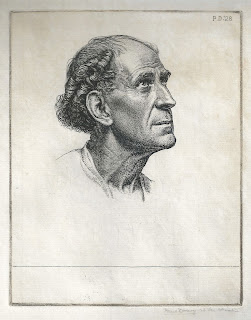 |
| Welby Sherman, The Baccante 1827 |
It is thought that this wood engraving The Baccante was cut from an Edward Calvert design by the artist, Welby Sherman. It is one of two engravings
made after the subject. This version was released in 1904 in the Carfax Portfolio in an edition of 30
impressions .The other engraving of which there is only one impression (British Museum) was probably cut by Calvert
when he was learning wood engraving,
possibly under the supervision of Sherman.
In the listed information on item 14 in Campbell Fine Art
Catalogue 11 (2004) the author states that;
“It appears far more likely that
Welby Sherman’s engraving was the first engraved version (probably based on a
drawing or painting by Calvert), possibly even produced as Sherman instructed
the inexperienced Calvert in Wood engraving techniques… The highly evocative
design with its strongly pagan associations is filled with the ecstatic
lyricism which characterises Calvert’s finest works. The design of the musician
is thought to be derived from Greco-Roman figures and may have originated from
a gemstone; however the idyllic pastoral setting appears completely of Calvert’s
own invention and is in tune with his passionate images of the ‘Ancients’ who,
along with William Blake, had been inspired by the discovery of an untainted
countryside around the village of Shoreham during the mid-1820’s”
Campbell (Autumn 2004), p25
There is very little information written about Sherman or
the part he played with the Ancients.
It is thought that Palmer’s wood engraving,
Harvest under a Crescent Moon was probably engraved by Sherman in 1826. It
is also known that Sherman stayed at Shoreham for extended periods and was
often short of money. He even swindled Palmer’s Brother out of his family inheritance
of £500
in a billiard game, and fled abroad.













